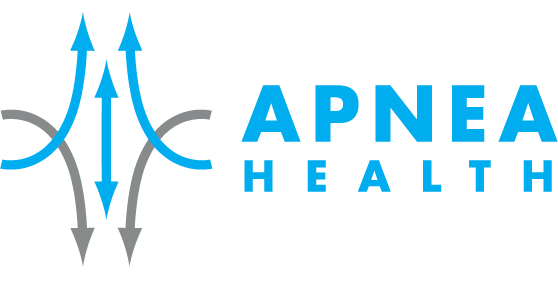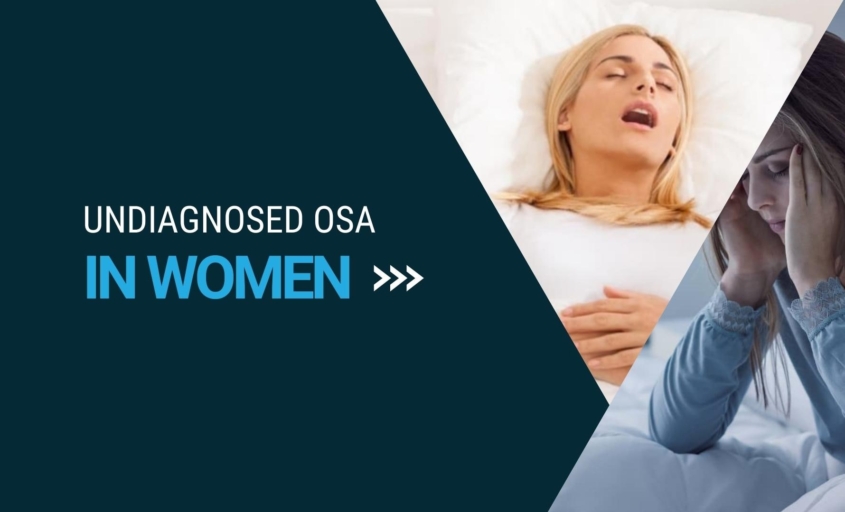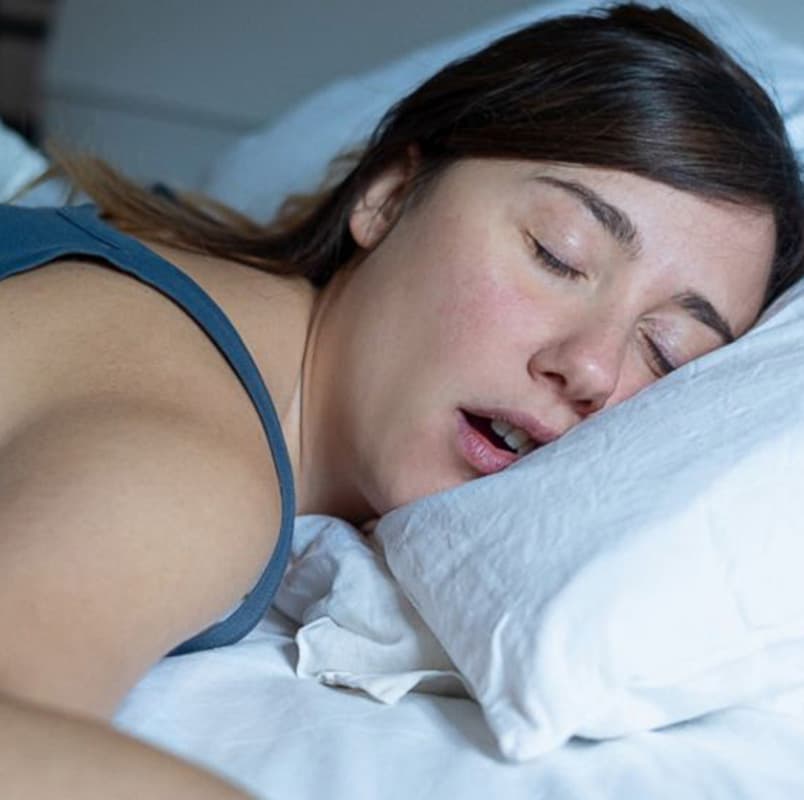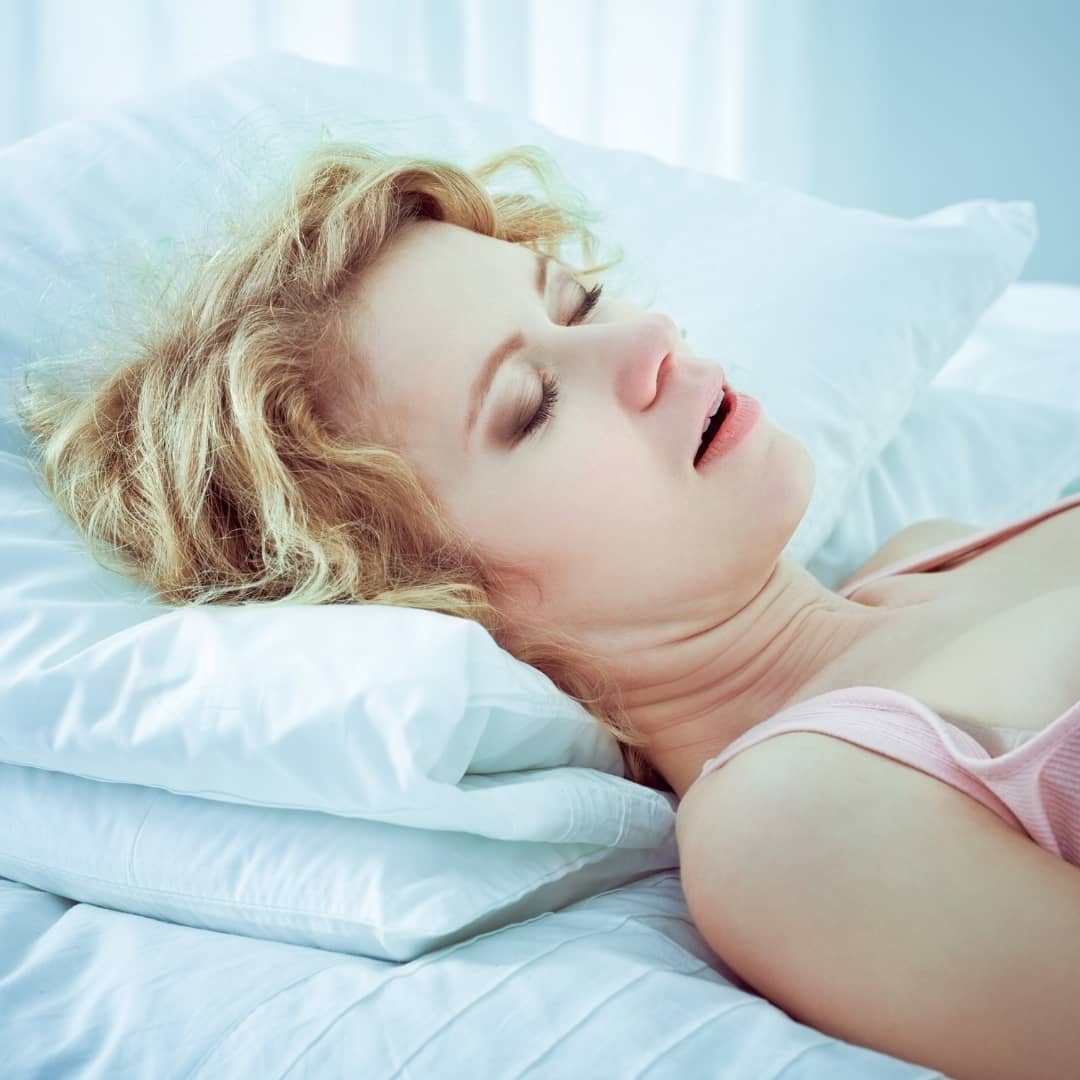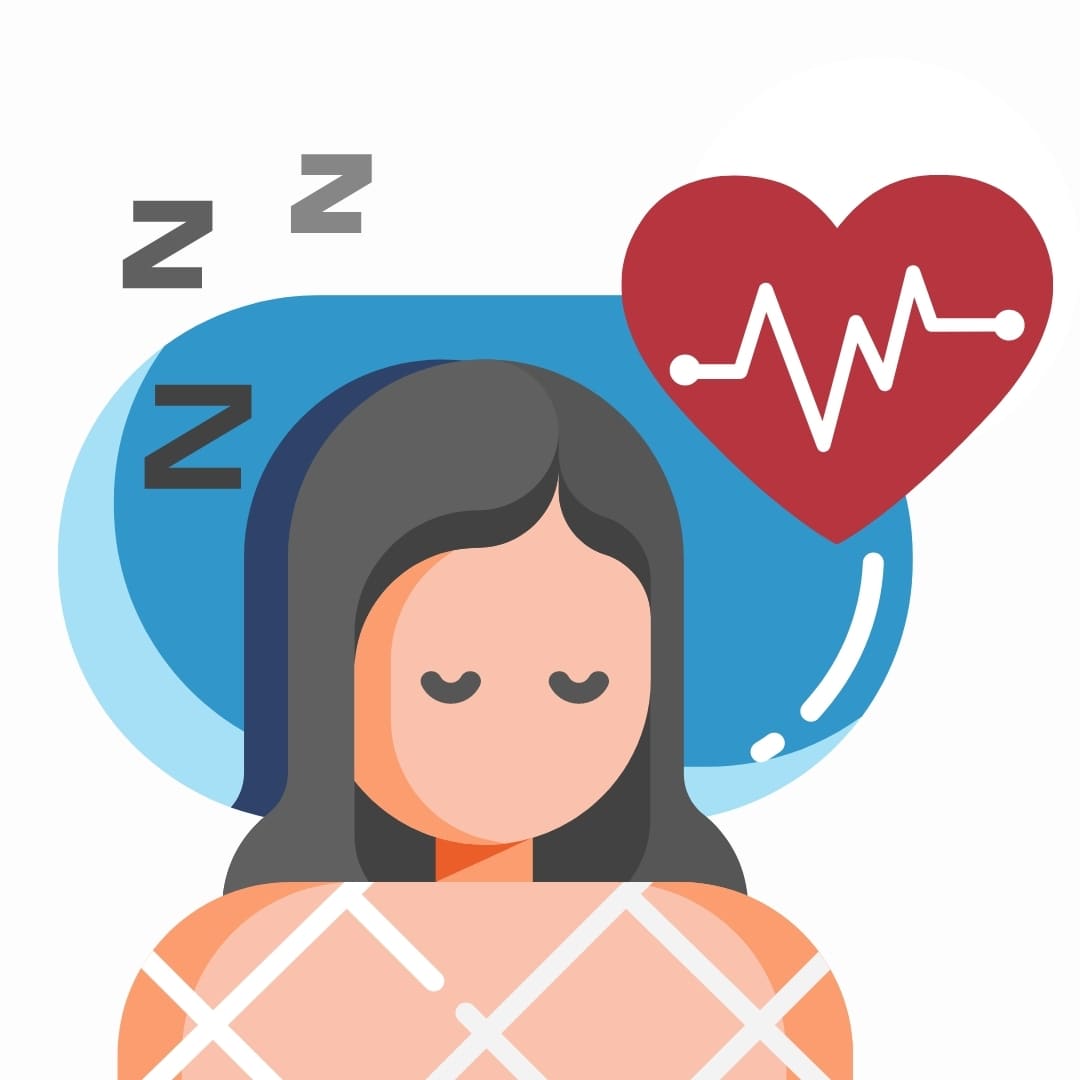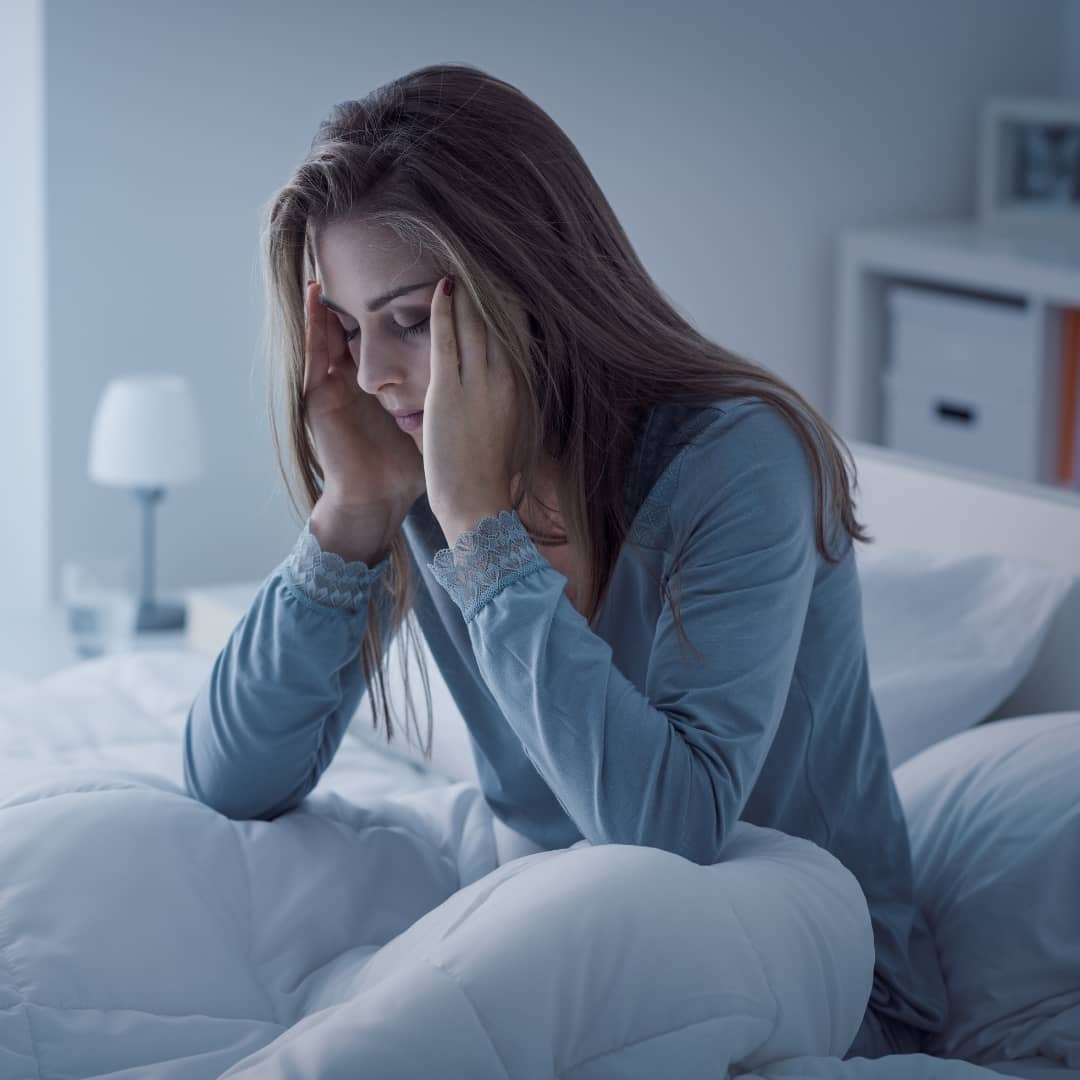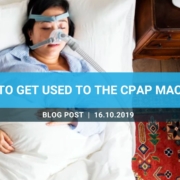Undiagnosed OSA in Women
We know what sleep apnea looks like, right?
Middle-aged man, kind of stocky, looks tired and snores like a freight train? The truth is, that’s a common profile for Obstructive Sleep Apnea (OSA), but it’s far from the only one. OSA results from physical conditions that can affect people of any age, size or gender.
- It often goes undiagnosed in women
- How does OSA work differently in women?
- How does OSA in women get missed so often?
- Some examples include
- Getting missed doesn’t mean it doesn’t matter
- What to watch out for
- Risk factors for women
It often goes undiagnosed in women
Symptoms that point to OSA can be less pronounced in women than men, but studies suggest the consequences are just as damaging for women, if not worse. And it may be more common in women than we think; by some estimates, men are twice as likely to have sleep apnea, but are diagnosed with it 8 times more often. It’s been suggested that happens because women’s symptoms present differently from the typical male profile and therefore get missed.
How does OSA work differently in women?
There are a number of factors that contribute to Obstructive Sleep Apnea in both men and women, but at the basic level what happens is the soft tissues at the back of the throat relax during sleep, sinking down and blocking the upper airway. This causes an interruption in breathing, which makes the brain alert the body to wake up slightly and re-open the airway. These micro-interruptions in sleep are rarely even noticed by the OSA sufferer, but they can happen many times an hour – meaning people not only lose sleep, but they’re often prevented from entering into deeper sleep phases, which makes for a groggy morning.
While a lot of men with OSA are loud snorers, and frequently report daytime sleepiness to the point of losing focus, women are less likely to report such symptoms. For whatever reason, women are less likely to report the feeling of “tiredness” unless the problem reaches extremes, at which point they are more likely to use words like “fatigued” or “exhausted.” In a woman who doesn’t fit the typical profile for OSA (overweight, male, loud snoring, etc.) a symptom like fatigue will often lead doctors to investigate thyroid issues or depression, and miss the possibility of sleep apnea.
How does OSA in women get missed so often?
Doctors, like the rest of us, can fall victim to preconceived notions about what the condition looks like.
While a sleep study will often be ordered for a man who fits the profile and complains of related symptoms, those same symptoms may be overlooked or thought of as part of a different issue for a woman.
Some examples include
- Snoring – women will often report lighter snoring, or none at all (because who wants to admit that?). On top of that, male partners are typically less likely to notice snoring. An almost comically frequent refrain from men who turn up for sleep studies is, “I’m here because my wife says I snore too much” – the same is more rarely true in the reverse.
- Symptom overlap – symptoms that women do mention to their doctors are also associated with other conditions. Things like headache, fatigue, lack of energy or moodiness are often chalked up to menopause, depression, insomnia or other issues.
- Low but present apnea events – women tend to have a lower apnea-hypopnea index (AHI) than men. That’s a measure of the number of breathing interruptions per hour, which means they (or their partners) are less likely to notice them.
Getting missed doesn’t mean it doesn’t matter
Evidence shows that while OSA symptoms are typically less pronounced in women, the negative health effects are just as bad if not worse.
A 2013 UCLA study showed that normal autonomic responses to control things like blood pressure, heart rate and sweating are reduced in people with OSA, but the reduction is even more pronounced in women. They conducted a number of tests on men and women with OSA and their findings were concerning.
“The heart-rate results for these tests show that the impact of sleep apnea, while bad in men, is more severe in women,” said lead researcher Paul Macey. “This may mean that women are more likely to develop symptoms of heart disease, as well as other consequences of poor adaptation to daily physical tasks. Early detection and treatment may be needed to protect against damage to the brain and other organs.”
What to watch out for
Because it so often gets missed, it’s important to pay attention to symptoms that could mean you have OSA, in order to prevent further health complications down the road. Things you may notice that could point to sleep apnea include:
- Your breathing stops and restarts while you sleep (noticed by a partner, perhaps)
- You wake up a lot during the night (to use the washroom for example – under normal conditions you shouldn’t need to get up much at night)
- You get a full night’s sleep but you feel tired anyway
- You snore (even a little – no judgement!)
- You have low energy or daytime fatigue
- You’ve been told you have high blood pressure, or you have fibromyalgia
- You get frequent morning headaches
OSA can be debilitating, and also comes with risks of more dangerous complications for overall health, but it can be effectively treated with CPAP. If you suspect you may have OSA, don’t hesitate to consult with us for more information.
Risk factors for women
Even if you don’t have OSA or suffer from OSA symptoms now, there are certain factors that could put you more at risk of developing sleep apnea; if you have any of these, it’s a good idea to pay extra attention and act immediately if you notice symptoms appearing. There are also factors that can aggravate the negative health consequences of OSA.
Things to keep an eye on include:
- Reaching a certain age – women aged 55-70 are 14% more likely to have OSA
- Becoming pregnant – pregnancy can increase your chances of developing OSA, and if left untreated it can cause complications
- Carrying extra weight – obese women in the 50-70 age range are 31% more likely to have OSA
- Menopause can bring on sleep apnea
- The chances of developing OSA for women with polycystic ovarian syndrome are up to 70%
- A family history of sleep apnea increases the likelihood you’ll have it too
- Chronic congestion, for any reason, can be linked to OSA
- High blood pressure, diabetes and asthma all have strong associations with OSA
If you have concerns about any signs of Obstructive Sleep Apnea, book an appointment and get assessed:
